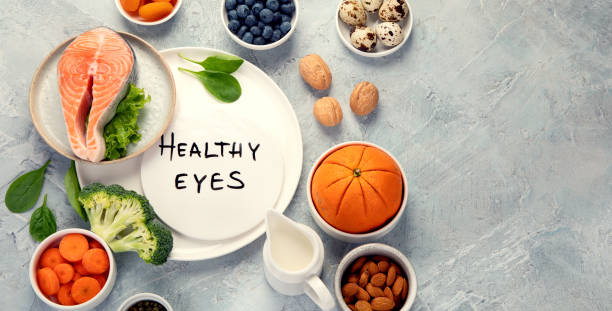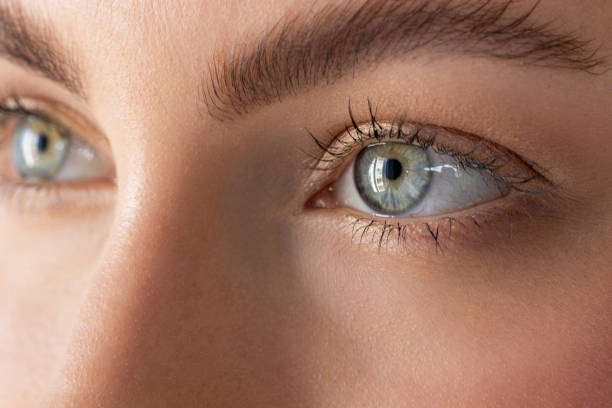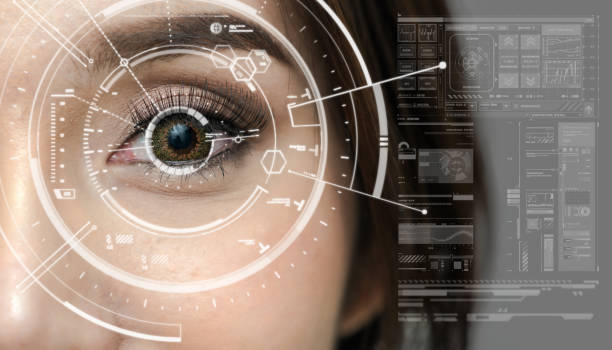Introduction
Our eyes are windows to the world, letting us take in colors, shapes, and moments we never want to forget. We use them every day to read, work, play, and connect with the people and places we love. Clear vision helps us enjoy life more fully and stay independent as we age. That’s why taking care of your eyesight is not just important—it’s essential for long-term health and quality of life.
In this post, you’ll discover 10 simple, proven tips to help you maintain healthy eyesight for life. These tips are easy to follow, backed by science, and written in a friendly, caring way so you can start protecting your vision today.
1. Get Regular Eye Exams
Why eye exams matter
Visiting an eye doctor regularly helps catch vision changes early, even before you notice any problems. Many eye conditions, such as glaucoma, cataracts, or age-related macular degeneration, can develop silently without pain or warning signs. Without early detection, these issues may lead to permanent vision loss.
A proper eye exam can spot these conditions in their earliest stages, giving you the best chance for successful treatment. Regular check-ups also help your doctor track your eye health over time and update your prescription if needed, so you can always see clearly.
Key points:
- Adults under 40: one exam every two years if your vision is good.
- Adults 40 and over: one exam every year or as advised by your doctor.
- If you have diabetes or eye disease in the family, talk to your doctor about more frequent check-ups.
External authority:
The American Academy of Ophthalmology notes that early detection can make a big difference in outcomes. (Imagine linking to a high-authority site here.)
2. Follow the 20-20-20 Rule
Reduce digital eye strain
If you spend hours in front of screens, you’re at risk for digital eye strain. To help your eyes rest, use the 20-20-20 rule:
- Every 20 minutes, look at something 20 feet away for 20 seconds.
This simple habit relaxes your eye muscles and lowers fatigue. Pair it with blinks to keep your eyes moist.If you spend hours in front of screens—whether for work, study, or entertainment—you may be at risk for digital eye strain. Symptoms can include dry eyes, headaches, blurred vision, and even neck or shoulder tension.
One simple way to protect your eyes is to follow the 20-20-20 rule: every 20 minutes, take a short break and look at something 20 feet away for 20 seconds.
This easy habit helps relax your eye muscles, reduces fatigue, and prevents strain from building up over time. You can also pair this with regular blinking to keep your eyes moist and comfortable. Small changes like these can make a big difference for long-term eye health and clear vision.

3. Eat Eye-Healthy Foods
Nutrition for vision
What you eat matters for your eyes as much as it does for the rest of your body. Certain nutrients play a key role in maintaining healthy vision and protecting against age-related eye problems. For example:
- Leafy greens like spinach or kale are packed with lutein and zeaxanthin, antioxidants that help filter harmful light and support eye health.
- Carrots and sweet potatoes provide beta-carotene, which your body converts into Vitamin A, essential for clear night vision.
- Salmon and tuna are rich in omega-3 fatty acids, which help keep your eyes lubricated and may reduce the risk of dry eye syndrome.
- Eggs, nuts, and seeds contain Vitamin E and zinc, nutrients that protect your eyes from oxidative damage and support healthy retina function.
These nutrients work together to help guard against age-related vision loss. Research published in JAMA Ophthalmology shows that people who eat more leafy greens experience slower progression of macular degeneration, one of the leading causes of vision loss. Eating a balanced, nutrient-rich diet is one of the simplest ways to keep your eyes healthy for years to come.
4. Wear Protective Eyewear
Safety first
If you play sports, work with power tools, or handle chemicals, wearing proper eye protection is essential. Safety glasses or goggles can prevent serious injuries from flying debris, sparks, or harmful substances. On sunny days, high-quality sunglasses that block 100% of UV rays protect your eyes from harmful ultraviolet light, which can increase the risk of cataracts and long-term eye damage.
It’s important to remember that UV exposure adds up over time, even on cloudy days or during winter. Consistently protecting your eyes outdoors and in the workplace is a simple step that keeps your vision safe and healthy for the long term.
5. Quit Smoking
Smoking and eye health
Smoking does more than harm your lungs—it can seriously affect your eyes too. People who smoke are more likely to develop eye conditions such as age-related macular degeneration, which can lead to vision loss, cataracts that cloud the lens of the eye, and damage to the optic nerve, which is essential for transmitting visual information to the brain.
Quitting smoking is one of the most effective steps you can take to protect your sight and improve your overall health. Even reducing the number of cigarettes you smoke can help lower your risk and give your eyes a better chance to stay healthy over time. Making this change not only preserves your vision but also supports your heart, lungs, and general well-being.
6. Manage Chronic Health Conditions
Diabetes and blood pressure
High blood sugar and high blood pressure can harm the tiny blood vessels in your eyes, raising your risk for serious conditions like diabetic retinopathy and hypertensive retinopathy. Both of these eye problems can lead to vision loss if left untreated, but early detection and good health habits can make a big difference.
Taking care of your overall health is key: monitor your blood sugar levels, eat a balanced diet, exercise regularly, and follow your doctor’s advice closely. If you have diabetes or hypertension, it’s especially important to schedule yearly eye screenings. These check-ups help catch any changes early, so treatment can start promptly and your vision stays protected for years to come.

7. Practice Good Screen Habits
Healthy screen use
Screens are a big part of modern life, whether for work, school, or entertainment. But long hours in front of computers, tablets, or smartphones can cause digital eye strain, making your eyes feel tired, dry, or sore. To reduce discomfort and protect your vision, try these tips:
- Use blue light filters or apps, or enable “night mode” on your devices to reduce harsh light that can strain your eyes.
- Adjust screen brightness so it matches the lighting in your room, preventing glare and eye fatigue.
- Keep screens about arm’s length away to reduce the effort your eyes need to focus.
- Blink often to keep your eyes moist and prevent dryness.
- Use a humidifier if your home is dry, and consider artificial tears if your eyes feel dry or tired during the day.
Small changes like these can make a big difference, helping you stay comfortable, focused, and protect your eyes for the long term.r if your home is dry, and consider artificial tears if your eyes feel dry or tired.
8. Keep Your Eyes Hydrated
Dry eyes solutions
Dry eyes can cause discomfort, redness, and even blurry vision, making everyday activities like reading or working on a computer more difficult. To keep your eyes moist and comfortable, try these simple tips:
- Blink fully and often, especially when reading, using a screen, or focusing on detailed tasks, to naturally refresh your eyes.
- Use preservative-free artificial tears if your eyes feel dry or irritated, which can help maintain moisture without causing irritation.
- Stay hydrated by drinking water throughout the day, since overall hydration supports tear production.
- Avoid direct airflow from fans, heaters, or air-conditioning vents that can dry out your eyes quickly.
Following these habits helps keep the surface of your eyes smooth and clear, reduces irritation, and supports long-term eye health and clear vision.
9. Exercise and Stay Active
Physical activity and vision health
Exercise helps your eyes and overall health in two important ways. First, regular physical activity improves blood flow to your eyes, delivering oxygen and nutrients that support healthy vision. Second, exercise helps control weight, blood sugar, and blood pressure, which lowers the risk of eye problems like diabetic retinopathy, hypertensive retinopathy, and age-related vision loss.
The key is to choose activities you enjoy, so staying active feels easy and fun. Walking, biking, yoga, and swimming are all excellent options. Even a simple daily 30-minute walk can make a difference, helping keep your eyes healthy, reducing strain, and supporting clear vision for years to come.

10. Know Your Family History
Inherited eye conditions
Many eye conditions run in families, which means your risk may be higher if relatives have experienced certain problems. Ask your parents, siblings, or other close relatives if they have had conditions such as macular degeneration, glaucoma, early-onset cataracts, or retinal disease. Knowing your family history gives you a clearer picture of your own eye health risks.
If there is a family history of these conditions, it’s important to be proactive. Share this information with your eye doctor, as it may influence how often you need check-ups or screenings. Consider scheduling more frequent eye exams to catch potential problems early. In addition, adopting healthy lifestyle habits now—like eating nutrient-rich foods, protecting your eyes from UV light, and managing blood sugar and blood pressure—can help reduce your risks and support long-term vision health.
Why These Tips Matter
Taking steps like eating the right foods, getting eye check-ups, and resting your eyes aren’t hard. Yet they build up over time to keep your vision clear and healthy. Your eyes do so much—giving them good care means better quality of life now and later.
Conclusion
Your eyesight is priceless—maybe even taken for granted until things blur. But with these 10 easy, science-backed steps, you can maintain healthy eyesight for life. Whether it’s through good habits, regular exams, or eating the right foods, every little choice helps your vision stay bright. Remember—your eyes are worth it. They help you see the world and all it holds. So be kind to them today, tomorrow, and always.
Let’s keep the conversation going: What’s one thing you’ll start doing today for healthier eyes? Drop a comment, share a story, or ask a question—I’d love to hear from you!

